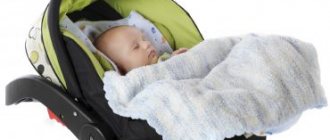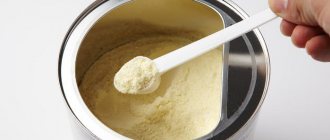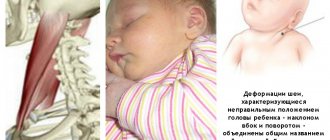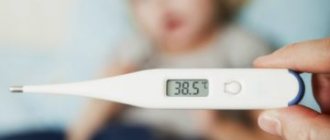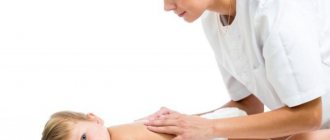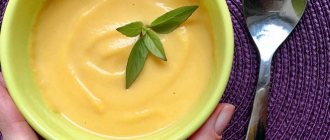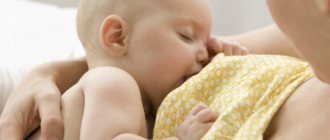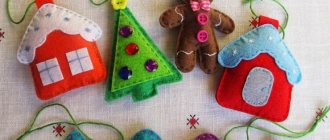Traveling by car with children is a tiring and dangerous activity. In addition to the driver’s close attention to the road, it is necessary to monitor the condition and well-being of the little traveler. A baby car seat is designed to solve these problems, allowing you to travel by car in comfort for parents and baby.
Since in children under one year of age the spinal region is not strong enough and is vulnerable, sharp jolts during an emergency stop of the car can lead to severe damage to the spine and joint-ligamentous apparatus.
Choosing the most suitable carrier will allow the baby, with maximum protection, to move with her parents without restrictions on the number of trips and distances. According to pediatricians, a properly selected car seat will not cause any harm to the baby and is a necessity in every family with small children.
What is a baby car seat, what age is it intended for children?
Transporting children in a car without special equipment is dangerous, according to the law of the Russian Federation, for which the driver faces a fine of 3,000 rubles. To reduce risks, special devices have been developed that are attached to the car seat and in which the child feels comfortable and completely safe.
The baby’s skeletal system is very fragile: from birth to one year, the skeleton mainly consists of cartilage tissue. The baby’s neck is a very vulnerable place: even slight but sharp jolts can lead to serious injuries. Therefore, the use of a car seat is mandatory.
There are different categories of infant carriers in which you can transport children from birth to a certain age and weight:
- group 0: this model resembles a hard cradle from a stroller and is intended for transporting a newborn from the first days of life until six months, on average, until the baby’s weight reaches 10 kg. Its weight is about 10–13 kg, so it is not mobile enough. Inside, the baby is only in a horizontal position on a soft special insert, somewhat reminiscent of a mattress. The device is equipped with: a hood that can be folded out;
- plastic handle with which it can be carried;
- To ensure the safety of the child, there are special belts inside that secure the baby in the chest area; The category 0 car seat is intended for children up to 6 months
- hood that can be folded;
- there is a special mechanism in the backrest, thanks to which you can change the position as the child grows up;
What types of car seats are there: consultation with Dr. Komarovsky - video
Soft or hard carrier, special stroller block for transporting a baby in a car
Some parents prefer not to buy a special car seat, but to replace it with a child carrier or a cradle from a stroller. Experts say this is wrong and in many cases unsafe:
- a soft carrycot, which often comes complete with a transforming stroller or is purchased separately, is very light, mobile and comfortable to carry the baby in. But it is absolutely not suitable for transporting a newborn in a car: the soft sides will not protect the baby in any way during an impact or a sharp push;
- the device cannot be fixed to the seat;
- there are no special belts to securely secure the child inside; The soft carrycot for children from birth to six months is not intended for transportation in a car
- not all carriers have special fastenings that provide reliable fixation in the car;
Description of the Isofix fastening system
The Isofix fastening system is a universal means of installing a car seat and securing a child in it. It is reliable and simple. Easy to install in the car. Eliminates incorrect operation. The system is suitable for children weighing up to 18 kg. Therefore, it is installed on chairs of groups from 0 to 1.
What it looks like (photo)
Most often the device is included in the base of the seat. But for carrycots, the Isofix base for the car seat is purchased separately. Some of the elements are located directly in the car interior. The device has an indicator that shows whether it is secured or not. Inside, the seat is equipped with a five-point seat belt, less often with a three-point one.
Design Features
Isofix consists of 2 parts. The first is the brackets located at the bottom of the child seat. The other is 2 metal brackets located in the body. These connectors are located at a distance from each other under the back of the rear seat, less often - under all passenger seats.
A large load causes the fastenings to fail, and the top of the chair suddenly moves forward. To avoid this, use a third fulcrum. This is an “anchor fastener” or “downward thrust”.
There are models without a third support point, where the design of the brackets is mobile, due to which the load is distributed evenly. But such a device is only suitable for a few car brands. In addition, without an additional support point, car seats are produced with a fixing table, which is located instead of a five-point belt.
Location in the car
Isofix brackets are located between the seat and backrest of the rear seat. To find them, you need to move the upholstery a little. Sometimes you have to stick your hand deeper, because... they are drowning inside. Mounting points are usually marked with the inscription Isofix and/or the image of a cradle.
Sometimes the device is found in the front place. But it is not connected to the body, so it does not provide complete safety.
Where is it located in the chair?
In car seats, the Isofix child restraint system is located on different sides. Therefore, before purchasing, be sure to consider how the device will be placed inside the car. In addition to the 2 main mounting points, some models contain an additional “anchor” or “downward” fastening element.
What is better for a newborn: a cradle or a chair?
Both devices are designed for children from 0 to one year, the car seat will be effective up to six months or until the child’s weight exceeds 9 kg and height 70 cm. The car seat provides comfortable travel for the baby until he is approximately 1-1.3 years old - until he gains weight 15 kg and did not reach height 75 cm.
READ ALSO: how to choose a car seat for children from 9 to 36 kg? From 0 to 6 months, the baby is more comfortable in a car seat, since he is in a horizontal state, and if there is an orthopedic insert, he is provided with a familiar position. This makes breathing easier, since a newborn baby’s respiratory system is still in the process of improvement. In order to breathe freely, the baby needs to be in a horizontal position. This is how the cradle differs from a group 0+ car seat.
In a group 0+ car seat, a child can be placed at an angle of 30-45 degrees, this reduces his comfort in the first three months, but not by much. In a normal situation, both designs are designed for the characteristics of the baby’s skeleton.
READ IN DETAIL: which car seat to choose for a child from 0 to 18 kg? In a car seat 0+, the baby takes a semi-sitting position, which is ensured by a special design
Recommendations for transporting a baby in a car seat
The car seat, if chosen, should be fixed at an angle of 30 to 45 degrees. Placing a child in a car seat with a lower recline angle will cause the baby's head to fall forward, which will interfere with his breathing, and at higher recline angles, safety will suffer. You can correct the tilt using rollers that are placed under the chair in the front of the device.
You can use a car seat if the child is in motion for no more than 1.5 hours. For long journeys, a carrier is better suited. READ ALSO: how to choose the right kangaroo carrier for newborns?
Types of car cradles
You should approach the choice of a car seat responsibly, choosing a device that is suitable for the age category and weight of the baby. Depending on these indicators, the following groups of cradles are distinguished:
- Category 0. This infant carrier is intended for children from birth to six months who are not yet sitting. The design is characterized by a horizontal backrest position.
- Category 0+. Such carriers are installed against the movement of the car (in the back or front seat), and are secured by five-point seat belts. They ensure the safety of a newborn in a frontal collision, are used for children under 1.5 years old, the maximum weight of the child is 13 kg. An alternative to group 0+ chairs can be 3-in-1 stroller cradles.
- Category 1. Car seats in this group are designed for children weighing 9-18 kg, aged from 1 to 4 years. They have five-point seat belts and an adjustable backrest.
- Category 2. Chairs are suitable for children from 3 to 7 years old, weighing 15-25 kg.
- Category 3. These chairs are suitable for children 6-12 years old, weighing 22-36 kg.
Where and how a car seat can be installed in a car to ensure the safety of the child
The location and direction of the infant carrier depends on its model and category:
- parallel to the seat;
- against the movement of the car;
- in the direction of movement;
- round trip.
The safest place is behind the driver's seat, which is where it is best to install a baby carrier.
How to position and secure a category 0 carrycot
A category 0 car seat should only be placed in the rear of the car so that the baby rides sideways. It is secured with basic seat belts, which do not allow it to move. The device takes up most of the back seat.
The car seat is attached to the back seat of the car
To keep the baby safe in the event of a sharp push or blow, there are special belts inside the cradle that are fixed on the baby’s chest. Physiologically, such models, where the baby is in a horizontal position, are the most convenient, especially for premature babies who have a very weak skeletal system.
Straps for securing the infant carrier in the car
The car seat has a special mount for installation in the car. It is also worth considering the fact that not all car models have seat belts in the rear seat. In devices of category 0 and 0+ they are included, which is very convenient.
A special device for fastening the infant carrier allows you to securely fix it with a seat belt
How can a car carrier be installed and fixed 0+
Car seats of category 0+ are attached only against the movement of the car, in order to ensure safety for the baby in the event of sudden braking or impact and protect him from injury. It is allowed to install such models not only in the back, but also in the front seat. For example, if one parent is traveling with the child, then it is better to secure the carrier in front, so the baby will see mom or dad, and the driver will not be distracted by turning back to look at the baby.
When installing a car seat in front, you need to turn off the airbags: they can cause great harm to the child.
Car seats category 0+ in the front and rear seats of the car - photo gallery
The car seat 0+ can only be mounted against the rear and front seats of the car. The car seat can be installed on the front seat. The hood in the car seat folds and unfolds and serves as protection from the bright sun.
Installation instructions: sequence of actions and photos
Experts say that car carriers of group 0+ are the safest for newborns and children under one year old. Such models are secured in the car using seat belts as follows.
- Move the front seat as far forward as possible.
- Install the device against the direction of the vehicle.
- Check the seat belt; if it is adjustable, set it to the lower position.
- Take the torso strap and thread it through the hooks on the sides of the chair.
- Fasten your belt.
- The shoulder strap must be placed behind the cradle and threaded into the hook located on the back. Tighten it until the device is securely fixed.
- Check that the carrier is securely fastened and that the straps are inserted correctly into the hooks. Make sure they are not twisted. When attaching the car seat to standard belts, you do not need to put anything under it. Rules for installing a car seat in a car
How to properly install a car seat in a car to carry a child - video
How to attach a car seat 0+/1
The category 0+/1 car seat is mounted in the cabin differently, depending on the age of the passenger. If parents use this model from birth to a year and a half, then it only needs to be placed against the direction of the car. When the baby grows up, it is installed facing forward and transforms into a car seat: the soft insert for newborns is removed, the backrest is adjusted so that the child can ride in a sitting position.
The fastening of a category 0+/1 car seat depends on the age of the child and can be against the movement or in the direction of movement
Base
In addition to the mounting method discussed above, the infant carrier can be installed on a special base, which is sold with some models. It is convenient because if parents need to transfer their baby in another car, they do not need to remove the base and rearrange it. It is enough to simply secure the infant carrier using standard belts.
The base is fixed to the seat using belts or the Isofix system and is constantly in the car, and the carrier itself is simply placed on top and snapped onto a reliable mechanism. Today, the newest models of infant carriers and seats are equipped with a kind of stand that rests on the floor. This design creates an additional fixation point, which increases safety when transporting a child. In crash tests, such devices receive the highest scores.
How to attach the base and place the carrier on it - photo gallery
The base is sold complete with a car carrier. How to properly install the baby seat on the base. A car seat with a base and a leg resting on the floor provides additional safety for the child.
The Isofix system is designed for fixing the infant carrier.
Another option for installing a car seat is the Isofix system, which was proposed in 1990. It consists of special brackets hidden between the back and seat of the car, and locks on the base of the carrier.
Isofix is a more reliable fastening option than standard belts or a base, as it has several fixation points. However, it is worth noting that this system has weight restrictions: the child’s body weight should not exceed 18 kg.
According to European laws, over the last few years all manufactured cars must be equipped with the Isofix fastening system.
It is very easy to secure the infant carrier; just connect the fasteners to the brackets inside the seat. A special indicator will show how correctly the installation was done: red - incorrect, green - correct. If there is no indicator, then if successful, a characteristic click will sound.
Also behind the back of the rear seat or in the trunk of the car there is a special Top tether mount, to which you need to attach a hook with a belt. This allows you to more securely fix the car seat.
Attaching a car seat to the Isofix system - photo gallery
The Isofix system is designed for a weight of no more than 18 kg. The Isofix fasteners on the car seat must be connected to the brackets hidden in the seat. The Top tether belt is the third point of support in the Isofix system. Fixing the car seat using the Top tether belt in the car.
Installing a car seat with a base and Isofix system - video
How to attach a baby seat in a car correctly
Any car seat for newborns must be attached correctly, otherwise the baby’s safety will not be ensured. Each product is sold with instructions, which contain photos or drawings, and also clearly describe how and where the infant carrier should be located and how it is secured. By following all the recommendations described, you will ensure the safety of your baby while in the car.
Seat belts
Almost all infant carriers have seat belts, which make the product universal, allowing you to attach the seat in any car. This is convenient if you have two or more cars. Some models have additional fixation and an auto-tensioning system, which simplify the process of installing the product and prevent it from moving during frontal impacts. Almost all models of car seats have three-point seat belts, but this fastening system is complex and is often secured by parents incorrectly, which reduces the child’s safety level.
Using the database
It is very convenient to use a car seat with a base that is securely fixed in the back seat of the car using special fasteners and remains there for the entire period of use of the safety device. The upper part of the carrier can be easily and simply unfastened and fastened back, and the use of belts in this case is not required. The infant car seat with base is sold as a set and provides all levels of the baby's protection system in the car.
Rigid mounting system
The most reliable fastening and method of fixing car cradles is a base with a support on the floor . It is secured with standard seat belts, but if desired, you can also use Isofix fastenings, which look like loops, have passed all the necessary tests, crash tests and comply with all standards. Only this system is not present in all cars, so check its availability when purchasing a seat. When installing such a device, follow the photo in the instructions.
Which is safer: a cradle or a group 0+ chair?
The car seat for transporting newborns in the car is installed perpendicular to the movement of the car and secured with standard belts. The car seat in the car is located facing the direction of travel, this significantly saves space in the cabin. Both designs involve the same fixation of the baby inside the device - with internal straps.
It is believed that in the event of a frontal collision of a car with an obstacle, a child's car seat can protect the child's head and neck somewhat worse than a car seat. A baby fixed in a chair, with the correct angle of inclination, will better withstand sudden braking, the head will not fall down or jerk sharply - this will protect the baby from breaking the cervical vertebrae.
To achieve the desired angle of inclination and fix the head of a small passenger, special bolsters or folded soft diapers are placed in the car seat. The side parts of the chair for children from 0 have special restraints that hold the child's head.
It is believed that when transported in a car seat for newborns, a child is provided with a greater degree of protection, and a short stay in a semi-sitting position cannot cause significant harm to the health of the baby. If transportation is planned for a long time or there are medical contraindications to the use of a car seat, you should prefer a car seat. In other cases, you can transport your child in a car seat.
READ ALSO: Which car seat to choose for your baby? Safety indicators speak exclusively in favor of the car seat - it better secures the child’s head and body
Instructions for using the cradle
In order for a child's cradle seat to fulfill its main purpose (protecting the child's body from injury during sudden braking, U-turns and accidents), it must be properly secured in the car interior. The child must be fastened in it. Such holding devices are supplied with stickers with visual information about the method of fastening or instructions. There are also general rules for all chairs. For example, models that provide for an exclusively horizontal position of the child’s body are placed in the back seat of the vehicle, sideways relative to the movement. They are secured with special belts that connect to the seat belts. A car seat for newborns with a carrying function is installed against the movement, preferably at the rear. It is attached in two ways:
- transitional belts to standard ones;
- using clamps to a special base stand.
If it is not entirely clear how to secure the device, it is worth looking at the photo, which shows in detail examples of securing the holding devices in the car interior. This will greatly simplify things.
Attaching a car seat can be done in several ways.
Categories of car seats for newborns in the car
A wide selection of bassinets allows you to choose a product that fully meets the individual needs of parents and the newborn. Car seat categories “0” or “0+” are specially designed for children from 0 to 18 months.
In the cradle, the child lies in a natural position for him. He does not experience stress on the spine.
Category “0” includes cradles intended for transporting children up to six months. They are quite bulky, but most suitable for a newborn baby. In a crib - a cradle for a newborn, the baby lies as if in a stroller, fastened with a wide belt. Most models can be secured in the rear seat with their side facing the direction of travel.
Category 0 product (photo)
Group “0+” includes car seats (carriers) for transporting children from birth to one year. Thanks to a special design, infant carriers correctly distribute the child’s weight.
Mounted on the rear or front seat facing rearward or facing forward. This is the safest position for the baby.
Portable cradles with stroller attachments
Some baby strollers have a removable unit that doubles as a carrier and car seat. They are multifunctional and portable.
Baby carrier (category 0+) Happych Oxy Len 3 in 1 stroller with carrier that can be installed in the car
Criteria for choosing a device for the little ones
- reliability;
- strength;
- safety;
- ergonomics;
- comfort;
- availability of a certificate.
These are the basic requirements for a car seat for newborns and a car seat for the youngest passengers. The design of the product must be as reliable as possible, the body must be made of impact-resistant plastic. The fastening of all removable elements must be of high quality, this will avoid injuries when any element comes off. The most reliable way to secure a child is considered to be five-point fastening (at the baby’s shoulders, belt and crotch area); the belts must be equipped with soft pads.
READ ALSO: how to choose an electric bassinet for newborns?
Ergonomics ensures the physiological position of the child’s body, this prevents the development of pathology of his skeleton. High-quality models are coordinated on design with orthopedists. Comfort for the baby is ensured by high-quality “breathable” upholstery material, headrests, neck bolsters and other additional accessories. Car seats for newborns are attached in two ways:
READ ALSO: how to properly and step-by-step fasten a car seat?
- standard belt (the most universal option);
- using a base with clamps (Isofix system).
A “recumbent” infant carrier is usually secured with standard seat belts in conjunction with its own special belts.
A car cradle must have a certificate of conformity with ECE R44/04 or GOST R. Before receiving the certificate, the product undergoes crash tests. This means that all possible safety standards were taken into account during its design. Crash test results can be found on the website of experts who test bassinets (for example, the ADAC club). Test results are published on the club website annually. The label on the ECE car cradle must contain mandatory information about the name of the product, the code of the country of certification, the weight of the child, the type of fastening and the presence of 5-point belts (designation - Y).
READ ALSO: cocoon cradle for newborns: pros and cons of use
Pros and cons of a child carrier seat
The versatility of car carriers expands the scope of application.
Advantages of a child car seat:
- using a carrier when visiting a clinic or when traveling by other means of transport,
- use as a means for rocking or feeding children,
- high level of comfort and protection of the child's body.
Disadvantages of a child carrier:
- failure to comply with basic requirements for fixation devices. If the carrier does not have the ability to adjust the position of the backrest, there are no headrests and special soft inserts that gently fix the body while moving, the trip will cause a lot of inconvenience for the baby.
Narrow fastening belts, if adjusted incorrectly (too strong/too weak tension), can lead to additional injuries in emergency situations on the roads.
- limited possibilities for replacing carrying with other means for moving children (walking is limited to a short distance).
Do you need a car seat for newborns?
A baby car seat-cradle is not a waste of money and not a whim of parents, but a means of first necessity when traveling with a baby in a car. The product ensures safety for the baby. The bones of small children are very fragile, the cartilage tissue has not yet strengthened, the head is large and heavy, so any minor accident can harm his health. The mandatory use of car cradles is even stipulated in the traffic rules, and violation of this clause leads to administrative liability and a fine.
Rules and features of operation: how to place a child in a cradle
For complete safety while traveling in a car, parents must follow a certain sequence of actions:
- correctly secure the infant carrier in the car (against the movement of the car, securely securing it with belts or on the base);
- carefully place the child inside;
- fasten the baby with seat belts;
- check whether the belts are securely fastened and whether the baby is well secured.
Car seat and winter clothes
Another important point when transporting a baby in a car seat is the clothes he is wearing. In the warm season there is no problem with this, but in winter, when the baby is dressed in voluminous jackets and overalls, this moment is important.
Experts recommend not placing a child in a car seat wearing bulky winter jackets, overalls or envelopes due to the fact that the larger and denser the layer of clothing, the less securely it is secured. This reduces the security of the device. It is better to put the baby in a well-warmed car, and to make sure that he will not freeze, cover him with a blanket or rug.
Is it possible to put a child in a car seat in bulky clothes, an envelope or a blanket: the opinion of Dr. Komarovsky - video
Do I need to use an extra mattress?
Along with the carrier, you need to purchase a special liner, which is a canvas covering the entire length of the cradle with a convex cushion at the bottom. For what? To ensure that the baby is in a physiological position and there is no load on the still fragile spine. When such a mattress is placed in a car seat, the child lies correctly and the back does not sag.
All infant carriers, except category 0, are a deep concave bowl, which does not allow the child to lie completely horizontally. Therefore, many parents, when buying a device, worry about the position of the baby in it.
Sometimes the mattress has sides for additional protection of the neck and head from impact. There are also special inserts on sale that you can simply place in the infant carrier under the mattress without a sewn-in bolster. If you do not have such a liner or mattress, you can use a blanket or towel. This is necessary for additional fixation of the child in the device.
A special mattress for placing a newborn in a car seat - photo gallery
Special protection and support for the baby’s neck and head and fixing straps. A mattress in a car seat with a bolster to ensure the baby’s correct position. A special mattress with neck support for newborns.
Anatomical insert in the car seat so that the newborn can lie and sleep comfortably - video
Making your own liner
You can sew the insert for the car seat yourself. For this you will need:
- dense fabric made from natural materials so that the baby does not have allergies;
- filler (sintepon or foam rubber).
Pattern of an insert for a car seat with dimensions
- We cut out parts for the liner: two from fabric, one from padding polyester.
- We put a padding polyester between the fabric parts and stitch the mattress, bending the fabric inward so that the edges are immediately processed.
- Using a measuring tape, we mark the places where the liner needs to be stitched so that it takes on the desired shape.
- We go through the construction site several times in the right places. The dimensions of the insert may vary depending on the parameters of your infant carrier, so they are determined individually
How to transport a newborn?
A car seat for newborns is a special device for transporting young children who cannot yet be seated. According to their physical capabilities, they can only lie down.
The main features of the device are as follows:
- durable body;
- devices to protect the baby’s body from impacts;
- belts holding the child inside the structure;
- orthopedic base (inner surface) of the chair.
According to the method of placing the baby in a child car seat, all models can be divided into two groups: group “0” and group “0+”. The first (the car seat itself) is characterized by the fact that the child is placed exclusively in a supine position. The second (car seat for newborns) allows you to transport a baby who cannot be seated like an adult, half-sitting (the legs and head are raised, special bolsters are placed under the head and neck) (we recommend reading: how to transport newborns in a car?).
This is the main difference between the two devices. Often, such car seats can be fixed to the stroller frame. In addition, a distinctive feature of the car seat is its handle, which makes it possible to use it as a baby carrier.
In the infant carrier, the baby takes a natural lying position for his age.
The maximum weight for which both groups are designed, according to the manufacturer’s documentation, is 10-13 kg, the maximum age is 1-1.3 years. But reviews from parents indicate that in most cases, children outgrow such car seats and bassinets by six months.
Characteristics of the most popular models
The Cam Area Zero+ baby carrier is designed for babies from birth to one and a half years. Its advantages include a durable plastic frame and an anatomical insert that ensures the correct position of the newborn. The cradle can be carried using a comfortable handle that can change its position.
The detachable visor will protect the baby from the sun and prying eyes. Soft high side walls and wide three-point belts ensure the safety of the child during the trip. This child car seat is made in Spain and costs from seven to eleven thousand rubles.
Area Zero+ Neonato (CAM)
Ratings of car seats for children are publicly available on the World Wide Web. Use this information to ensure maximum protection for your baby.
Every little detail in the Egida Lux Leader Kids baby carrier is very well thought out. It can also be used for newborns, as it has an anatomical shape.
The body of the Egida Lux Leader Kids car seat is made of durable plastic, and the sides are soft and high, which makes the baby’s stay in the car safe and comfortable. The length of the internal straps is adjustable and has soft padding.
Special inserts for newborns prevent the baby from moving during movement. The chair can be carried with a comfortable handle and even used at home as a cradle. Bright colorful colors and attractive price make it very popular. This device can be bought for 2-3 thousand rubles.
Egida Lux from Leader Kids (photo)
The chair made in Russia – “Food-Food” – meets all safety standards and requirements. It is convenient for the baby and can be attached to almost any car.
The “Go-Go” carrier has orthopedic inserts and liners, a soft headrest and high sides. The child is safe in it from birth.
The soft three-point belts are protected against misuse and can be adjusted in length. The chair costs from 2000 to 5000 rubles.
“Food-Food” model for children from 0 to 13 kg
One of the cheapest car seats for newborns is the Nania Baby Ride 0+ carrycot. It costs about 2000 rubles, but is made of very high quality. It can be used for babies up to one year old. The only drawback is that the backrest is not adjustable.
The body of the Nania Baby Ride 0+ car seat has an anatomical shape and follows the contours of the child’s body. A special liner supports the head and protects the spine from injury.
The wide five-point harness holds the baby effectively and gently. The carrycot can be carried and used as a rocking chair for newborns at home.
Nania PAPRIKA ECO
Device
A distinctive feature of the design of the car seat is the presence of a handle, which allows you to transfer children into or out of the car without the need for repositioning.
Main design elements:
- Base. Car seat models have a slightly rounded base shape. There are grooves on the bottom for adjusting the tension of the belts. Side stiffening ribs provide greater reliability. A special anti-traumatic pad protects the groin area from damage.
- Back. In car seats for the “0+” age category, the backrest tilt is adjusted by a special mechanism, and its shape anatomically follows the curvature of the spinal column. In chairs with an anatomical backrest, the little traveler will not get tired on the road when traveling long distances.
- Sunshield. Provides protection from sunlight, allowing the baby to sleep peacefully while the car is moving and when being carried.
- Carrying handle. Allows you to use the car seat outside the car for comfortable movement of the baby.
- Internal headrest. For safety reasons, the design of the carrier includes a developed headrest that fixes the position of the head.
- Seat belts. Narrow, hard belts are not suitable for child car seats. To comfortably secure the baby's position, the chair is equipped with wide straps.
The shoulder strap is height adjustable, equipped with a reliable locking system, and made of metal. The car seat has a five-point harness.
- Side protection. Designed to protect the baby from injury from the side. Adjusting the width of the belts takes into account the size of a particular baby, taking into account the amount of clothing he is wearing and the characteristics of his body structure.
- Protective removable cover. For children's car seats, they produce special, environmentally friendly covers made from natural fabrics that are breathable and easy to wash. Children's covers are hypoallergenic and have an antistatic effect.
- Fastenings with seat belts. Children's car seats are equipped with a three or five-point belt fastening system. The five-point system helps to evenly distribute the load on the adjustment belts, protecting the little passenger’s body from damage in cases of emergency braking.
- Special insert for newborns. Allows you to comfortably hold the baby, reducing the load on the spine.
Types of child car seats
Before installing this car device, you need to make sure that it matches the child’s age and anthropometric parameters. Depending on the age category, car seats are conventionally divided into subgroups. They differ in the type of fastening (main and auxiliary), as well as the design features of the car seat body. In addition, each type of restraint device has a specific fixation location. The following types of chairs can be found on sale:
- Group 0+. Such infant carriers are used for infants whose weight does not exceed 12 kg. Chairs in this group, as a rule, have several fastening systems and auxiliary support supports.
- Group 1. Seats of this type are intended for young passengers from one to five years old, whose body weight does not exceed 20 kg.
- Universal group. This format of chairs is suitable for several age categories at once, so this device is often used for several years. Due to the fact that such a device has an advanced regulation system, it can be adjusted to the baby’s height. It is also possible to separately adjust the angle of inclination.
- Group 2–3 These car seats are only suitable for transporting older children weighing up to 40 kg.
How to choose a car seat for newborns
Before you buy a car seat, you need to know the weight of the baby, its age, and also take into account the following important indicators:
- Availability of markings. The ECE R44/03 or ECE R44/04 designations indicate that the product has passed the necessary tests and meets all safety requirements.
- Carrying position options. If you need to buy a good model of a car seat, pay attention to devices in which the child can be transported both in the direction of travel of the car and against it - with his back to the driver's seat. The second position provides additional protection for the safe transport of infants.
- If you often transfer your car seat from one car to another or install it in a stroller, choose products with secure but simple locks that can be used to easily secure the car seat and unfasten it.
- Give preference to devices made from natural materials.
It is possible to purchase a car seat for newborns in Moscow, St. Petersburg, Ryazan and any other city in Russia. Experienced consultants will help you understand the advantages and disadvantages of modern devices for transporting children in a car, give characteristics, tell you about their sizes and the weight of the baby the product is designed for. In addition, you can learn about the operating features of a cradle for newborns, understand how long it will last, and then easily choose the right model.
Child's age and weight
Each infant carrier has instructions (with photos), which indicate not only how to attach it and use it correctly, but also what age and weight the product is intended for. It is very important to focus on this indicator, since the correct choice of device guarantees the baby’s comfort during the trip and safety in the event of an accident .
What materials is the cradle made of?
Carrying newborns into the car should be made of high-quality hypoallergenic, well-ventilated materials. It is better when the top coating is easy to clean and wash. If possible, purchase a product with removable covers that can be removed and washed. You shouldn’t choose bright colors for your baby carrier: the child doesn’t care about color yet, but you’ll have to clean it up often. For comfortable transportation of newborns, the car seat body must be made of impact-resistant plastic and be deep, providing protection in case of a side impact.
Backrest tilt adjustment
The ability to change the angle of the car seat backrest is a very important function, especially if the child is small or falls asleep all the time during the trip. In most classic chairs, children can sit in a reclining position; in cradles there are two options - horizontal and reclining. This is important when the baby has to spend a lot of time in the car. In car seats for older children, the backrest can change its angle relative to the seat or tilt the entire body.
Locking clasp
When purchasing a baby carrier, special attention should be paid to the clasps and locks on carriers for newborns and older children, the main functions of which are safety and comfort. Kids are interested in a lot of things and are curious, so on the road they begin to look at and explore everything. The fasteners are closest to it and at some point in time they become a toy for the baby. Choose a car seat with locks that have a latch that will prevent the baby from unfastening it and will be able to protect the baby. Take this into account when choosing a child seat.
Safety
This indicator cannot be described in one sentence. The safety of a newborn depends on several factors:
- Correct position of a newborn in a car seat or seat.
- Correct installation of the product in the car (against traffic or perpendicular).
- Use a special liner if necessary.
- Fixation of the baby using special fastenings.
The safety level of infant carriers for the comfortable transportation of newborns is checked by the German company ADAC using special crash tests. Based on research results, devices receive a rating from 2 to 5 and are rated as safe or unsafe products. True, it must be taken into account that not all models of infant carriers are subjected to these tests, but at the same time they can be completely safe, as evidenced by the ECE R44/04 marking.
How to use
To ensure safe and comfortable operation of the car seat, a number of requirements are imposed on the design and quality of the carrier:
- Reliable fixation of fastenings, capable of holding a child’s body during emergency braking or pushing.
- Convenient adjustment of the backrest position, ensuring minimal strain on the back.
- Compliance with modern safety standards, confirmed by the presence of the “ECE-R44/03” or “ECE-R44/04” marking on the product.
- Five-point seat belt system that allows even distribution of tension.
- Hypoallergenic antistatic textile covering made of natural material.
- The presence of a handle and sun protection for comfortable use.
Additional protection or comfort:
- mosquito net,
- rain cover (against rain),
- footrest with adjustment mechanism
- headrest pillow,
- warm envelope,
- apron to protect feet,
- cup holder,
- device for heating food on the road,
- humidifier.
The degree of need for accessories is determined by parents depending on the specific situation.

